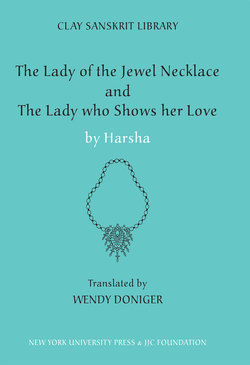Читать книгу The Lady of the Jewel Necklace & The Lady who Shows her Love - Harsha - Страница 43
На сайте Литреса книга снята с продажи.
Оглавлениеtells us of her concern for her daughter who is to marry a man in a far distant land. This is, of course, the situation of both Ratnavali and Priya·darshika, so that the actress is putting herself in the position of a person otherwise never mentioned by anyone in either play—the mother of the heroine. (We hear a lot about their fathers, kings, but not their mothers.) Nor do we hear another word about this story of the actress’s daughter that presumably plays itself out beyond the fourth wall, in a world parallel to the worlds of the heroines of the plays. We know that the stage director’s brother plays Udayana’s Prime Minister, Yaugandharayana, in ‘The Lady of the Jewel Necklace’ and the equivalent, Udayana’s chamberlain, in ‘The Lady who Shows her Love.’ It is also implied, in ‘The Lady who Shows her Love,’ that the stage director himself will play the king; so we may conjecture that the actress, in ‘The Lady of the Jewel Necklace,’ plays Vasava·datta. And the epilogue sends us off with a reminder that the joyous conclusion of the play will bring joy to us, too, beyond the fourth wall.
Finally, there is the fact of the doubling of the plays, mirroring the doubling of the characters in them. Many stanzas, and many elements of the plot, appear in both plays, but then the essential differences skew the mirror images. One might see an overarching paronomasia of the two dramas, each one referring simultaneously to itself and to the other. One could read them as an exploration of a fork in the road, two possible ways in which the same situation could be resolved, as in Peter Howitt’s film ‘Sliding Doors’ (1998), which follows the two very different plots that result when a woman either catches or misses a departing subway train. I ________
